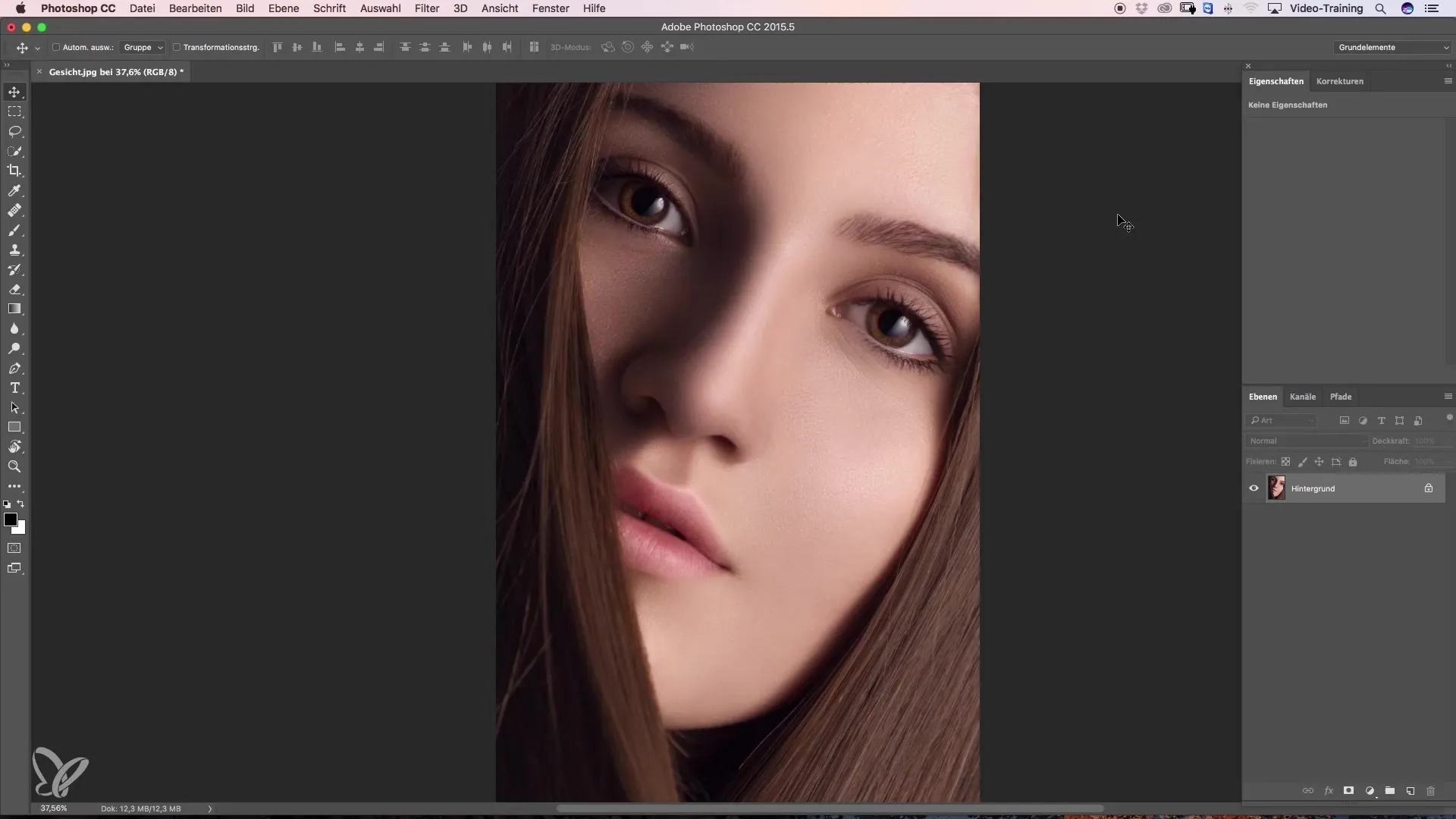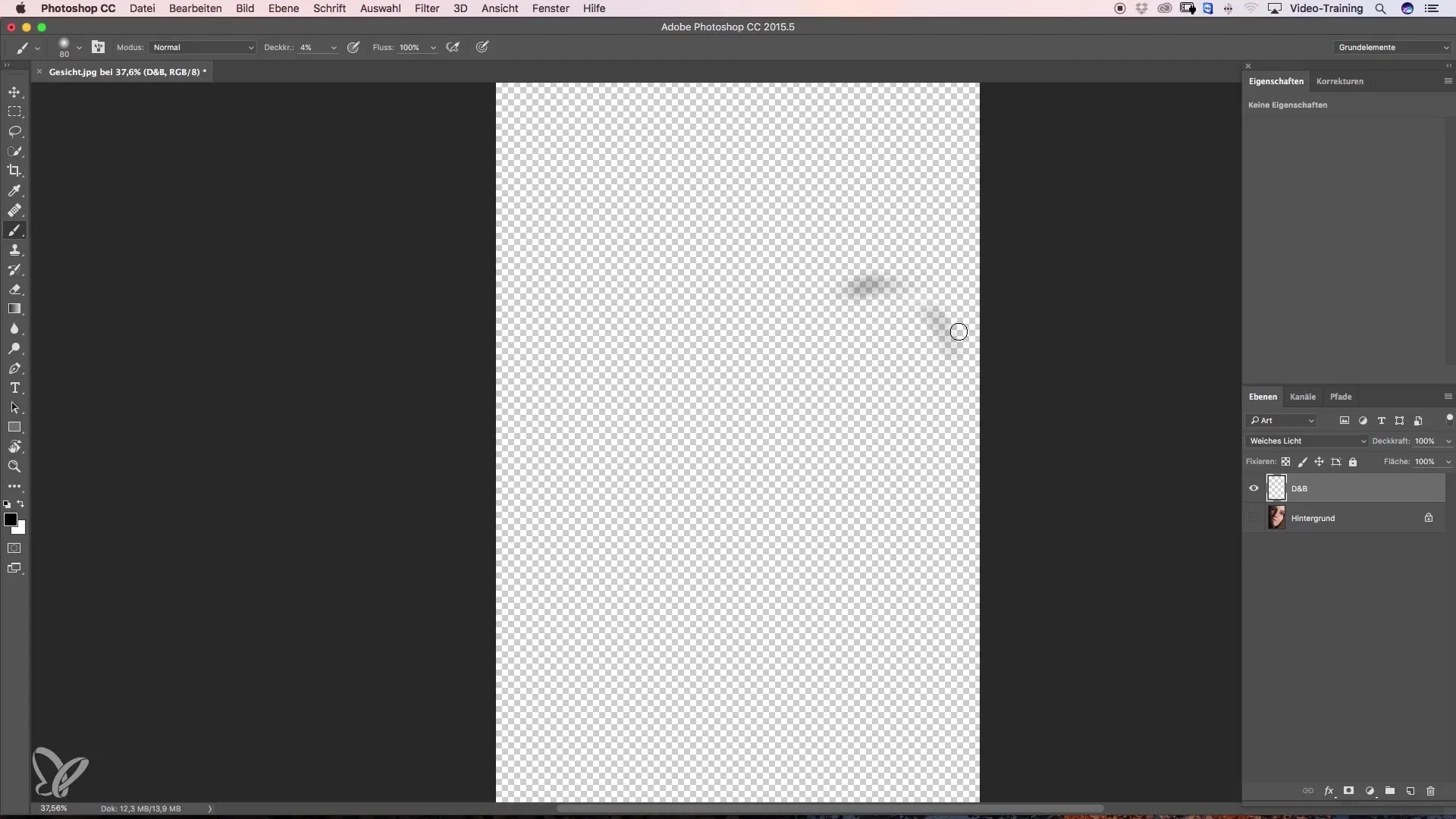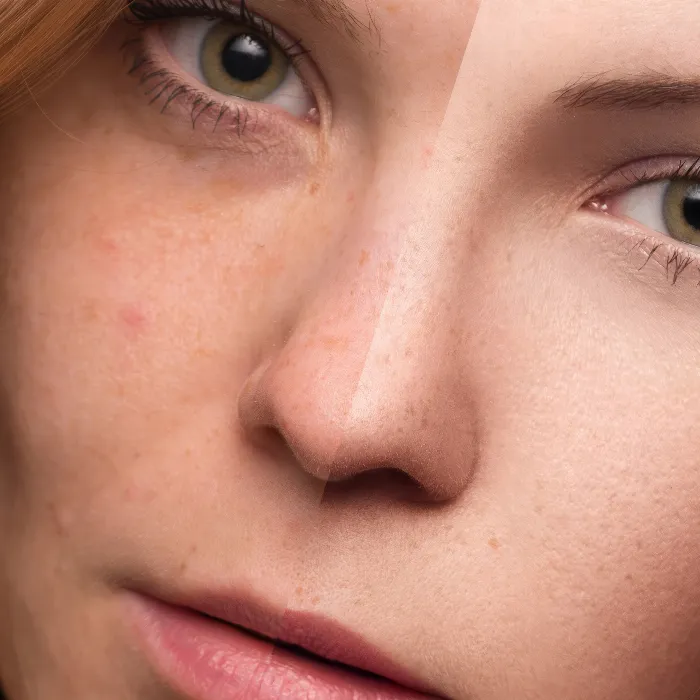The Dodge & Burn technique is an essential method in image editing that helps you bring depth and structure to your photos. In this tutorial, we focus on how you can work on a blank layer to get the most out of this technique. You will learn about the differences compared to the gray layer and how to effectively use the necessary tools.
Main Insights
- The lightening and darkening is done on a blank layer in "Soft Light" mode.
- With the brush tool, you have full control over the effects, while being aware that controlling the changes afterward can be difficult.
- It is important to experiment with the technique to develop your personal style and achieve the best results.
Step-by-Step Guide
First, you need to create a blank layer. Click on the layers icon in the bottom bar of Photoshop. This step creates a foundation for your further adjustments.

Now set the layer mode to "Soft Light". This setup will integrate the effect you create with your brush tool subtly and harmoniously into the image. Name your new layer something like "Dodge & Burn" to keep things organized.
With the brush tool, you can now work directly on this blank layer. This is a change compared to working with the gray layer, as you can only work with the brush. The "Dodge" and "Burn" tools are not available here.
Now start editing the desired areas of your image. For example, you can apply eyeshadow to the eye to enhance the look. It is recommended to start with a lower opacity to maintain control over the effect.
If you want a darker accentuation, you can use the same techniques to subtly darken or lighten the area. Be sure to experiment with different brush strokes and adjust the opacity.
After the adjustments, you will immediately see the difference between the previous and the following view. You will notice that Photoshop does not simply apply black strokes or white effects to the image, but that the adjustments appear fluid and natural.
However, be aware that one disadvantage of this technique is that it is often difficult to review individual changes afterward. Generally, using a gray layer allows for greater control over the edited areas.

Despite this disadvantage, the functionality remains very flexible, as you can still work precisely with your brush. You have the freedom to shape the darkness and brightness of your image according to your wishes.
There are many different approaches to how you can practice Dodge & Burn. Let your creativity flow and try different techniques to develop your personal style.
Remember that the technique you feel most comfortable with often yields the best results. Experiment, keep practicing, and work on your skills to master the technique better and enjoy the process.
Summary – Dodge & Burn: Effective Work on a Blank Layer
With this guide, you have learned the basics of Dodge & Burn on a blank layer. Through the practical steps, you can refine your image editing skills and develop your creative style. Be patient with yourself and find out what works best for you.
Frequently Asked Questions
What is the Dodge & Burn technique?The Dodge & Burn technique is used to deliberately control brightness and darkness in images to create depth.
What are the advantages of working on a blank layer?Working on a blank layer allows for a more intuitive and flexible editing process without permanent changes to the image.
Are there disadvantages to working on a blank layer?Yes, it can be difficult to trace and control the changes made.
Can I adjust the opacity of the brush?Yes, you can adjust the opacity of the brush to achieve smoother transitions and effects.
How can I better control my results?If you want greater control over your adjustments, consider using a gray layer.


